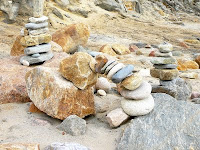One of the more bizarre aspects of beekeeping is discovering the enormous amount of bee-themed tchotchkes there are out there. I should have known.
But first some history: Many years ago we had bulldogs. My former mother-in-law’s family had kept bulldogs since the blustery day they hopped onto Plymouth Rock.
Initially I was terrified by the family bulldogs (growling, large protruding teeth, general bulk) but later I merely found them hideous. That too passed, as do so many aversions, and I grew to love the bulldogs so fervently that we eventually got one, and then another of our own.
By then I considered them to be the loveliest and wisest of creatures. I admired their ability to sleep all day, and I was in awe of the trajectory their drool could achieve by a simple shake of their enormous heads. Additionally impressive was the complete inability of a bulldog to survive ‘in the wild’. Not only were bulldogs pups always delivered by C-section, on account of their heads being too wide for the birth canal, but also insemination had to be effected artificially, on account of the impossibility of the male bulldog completing the act without getting stuck.
Not having grown up with dogs, I was blissfully unaware of the breed-specific paraphernalia that comes with them. I learned. While we had bulldogs, every Christmas and many birthdays were accompanied by gifts of dubious taste portraying bulldogs on a variety of objects. Objects with which you had never before associated bulldogs. Therefore I do not mention porcelain figurines of Union-Jack wearing bulldogs or prints of bulldogs playing poker. No, I am referring to bulldog paper towel dispensers, and bulldog doorstops and footstools, bulldog lamps, earrings, gravy boats, andirons, scissors, bath mats and candy jars.

You get the idea.
Our last bulldog died in 2002. By then I was divorced; acquiring another bulldog would have felt presumptuous.
Besides which, CSB, kind though he was with the late Billie, was not a bulldog aficionado. A year or so later we got 2 springer spaniels who do not seem to inspire themed gift giving.
Then came the bees.
Again, I should have predicted.
But I will insist that the decorative use of bees is intrinsically more tasteful than that of bulldogs. The Cretans made gold earrings in the shape of honey-dripping bees. Napoleon took bees as his symbol, and Empire furniture and fabric are thereby much adorned with their elegant shape.

Viz. Napoleon’s velvet robes in this portrait by Ingres.
That was a long and roundabout introduction to what was meant to be a short and pithy homage to our bee themed gifts this past Christmas: the finger puppets, wind-up toy, candle-holder, hooks, toiletry case, note cards and of course the soap. I love the soap.


In case you are wondering, sometimes I receive hagiographic gifts but these are fewer, and beloved CSB does not find them remotely as entertaining as I do. (Saint Theresa of Avila in a snow globe? What is not to like?)



















































